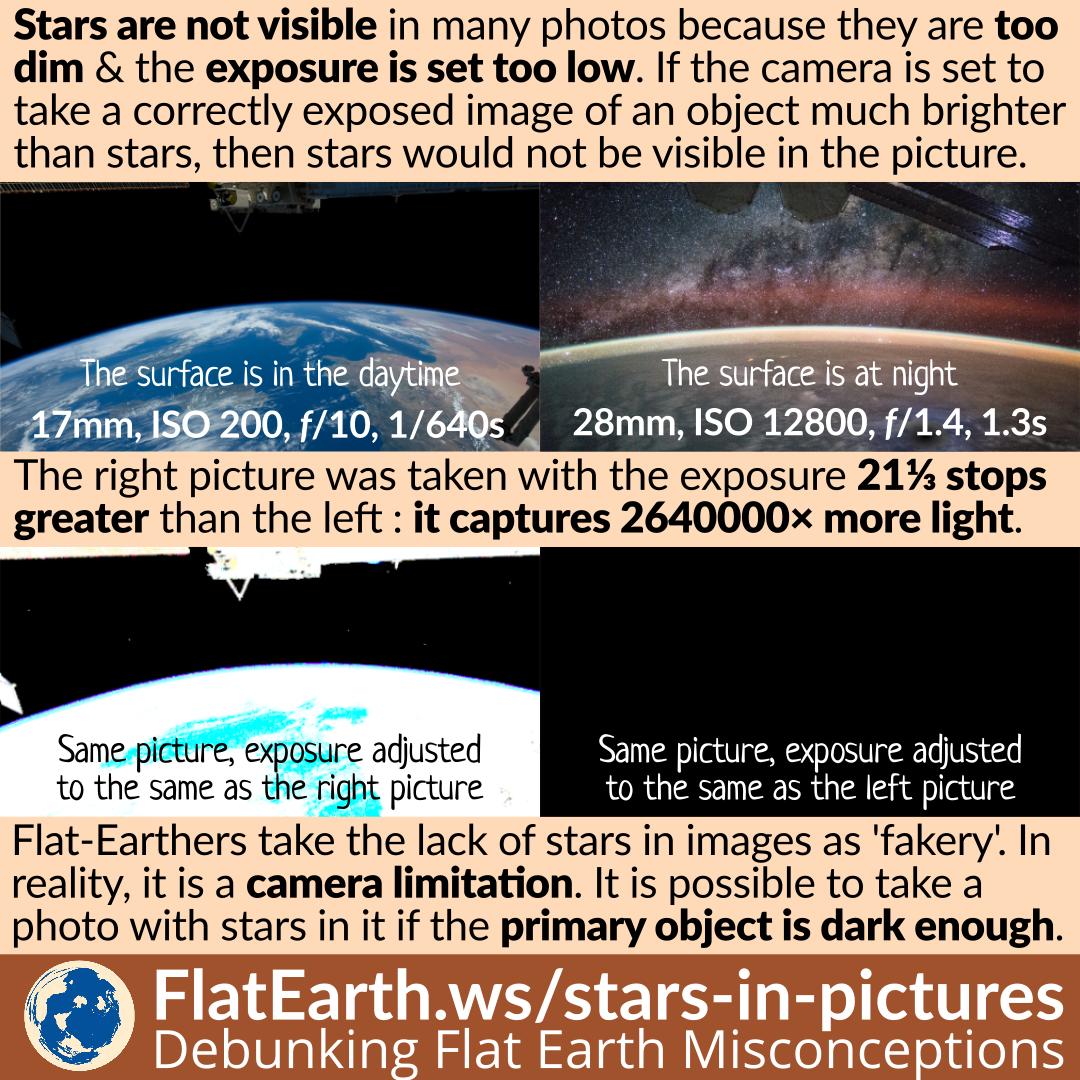The lunar surface is as dark as worn asphalt. It appears bright at night because everything else is darker. And in photos, its brightness is only a matter of the camera’s exposure settings.
In photos taken on the Moon, its surface looks dark unlike the Moon at night & flat-Earthers dismiss them as fake. In reality, it is just a matter of camera exposure. We can easily turn worn asphalt to look bright in photos by changing the exposure the same way the lunar surface can look bright or dark in photos.




